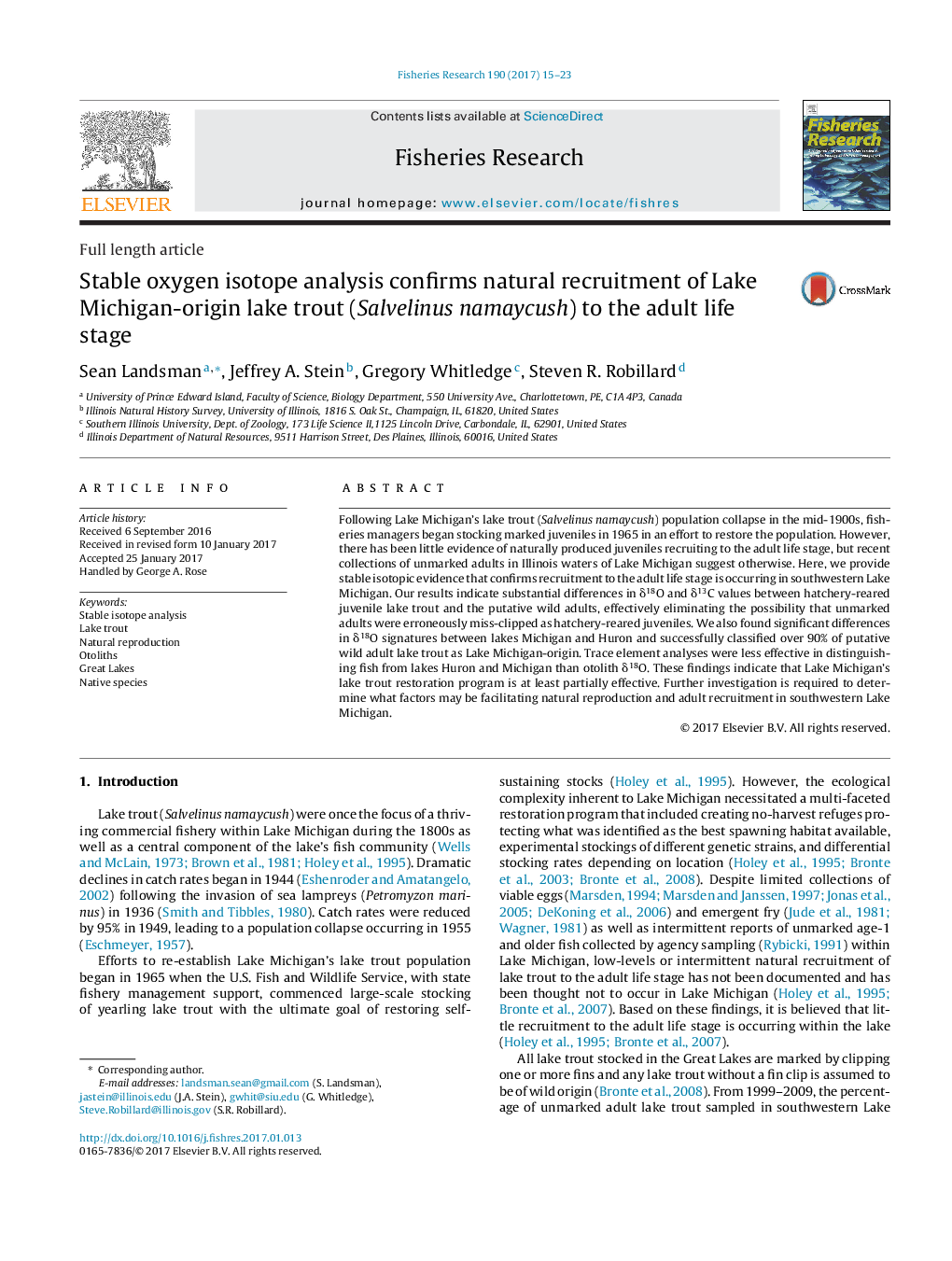| Article ID | Journal | Published Year | Pages | File Type |
|---|---|---|---|---|
| 5765539 | Fisheries Research | 2017 | 9 Pages |
Abstract
Following Lake Michigan's lake trout (Salvelinus namaycush) population collapse in the mid-1900s, fisheries managers began stocking marked juveniles in 1965 in an effort to restore the population. However, there has been little evidence of naturally produced juveniles recruiting to the adult life stage, but recent collections of unmarked adults in Illinois waters of Lake Michigan suggest otherwise. Here, we provide stable isotopic evidence that confirms recruitment to the adult life stage is occurring in southwestern Lake Michigan. Our results indicate substantial differences in δ18O and δ13C values between hatchery-reared juvenile lake trout and the putative wild adults, effectively eliminating the possibility that unmarked adults were erroneously miss-clipped as hatchery-reared juveniles. We also found significant differences in δ18O signatures between lakes Michigan and Huron and successfully classified over 90% of putative wild adult lake trout as Lake Michigan-origin. Trace element analyses were less effective in distinguishing fish from lakes Huron and Michigan than otolith δ18O. These findings indicate that Lake Michigan's lake trout restoration program is at least partially effective. Further investigation is required to determine what factors may be facilitating natural reproduction and adult recruitment in southwestern Lake Michigan.
Related Topics
Life Sciences
Agricultural and Biological Sciences
Aquatic Science
Authors
Sean Landsman, Jeffrey A. Stein, Gregory Whitledge, Steven R. Robillard,
